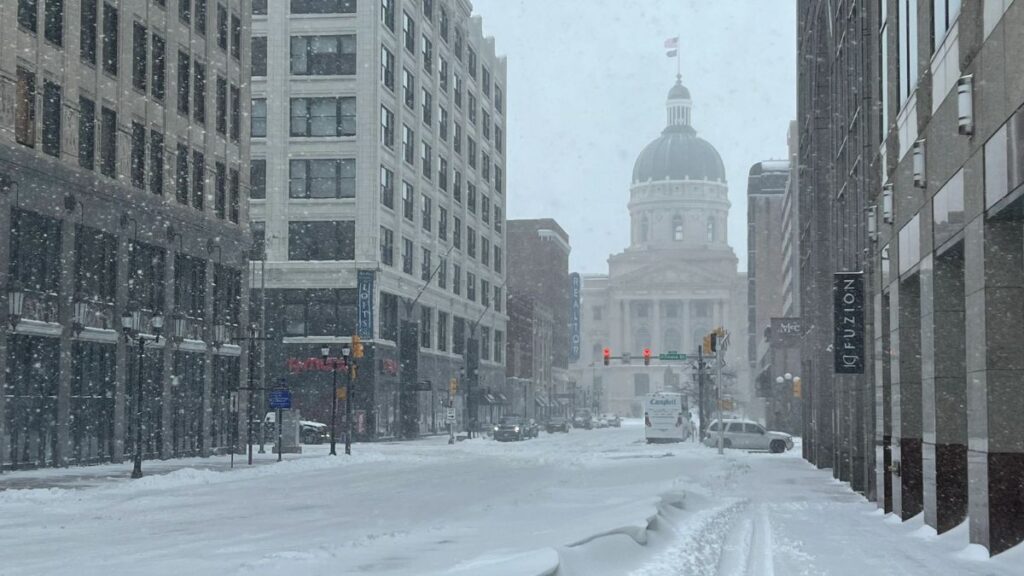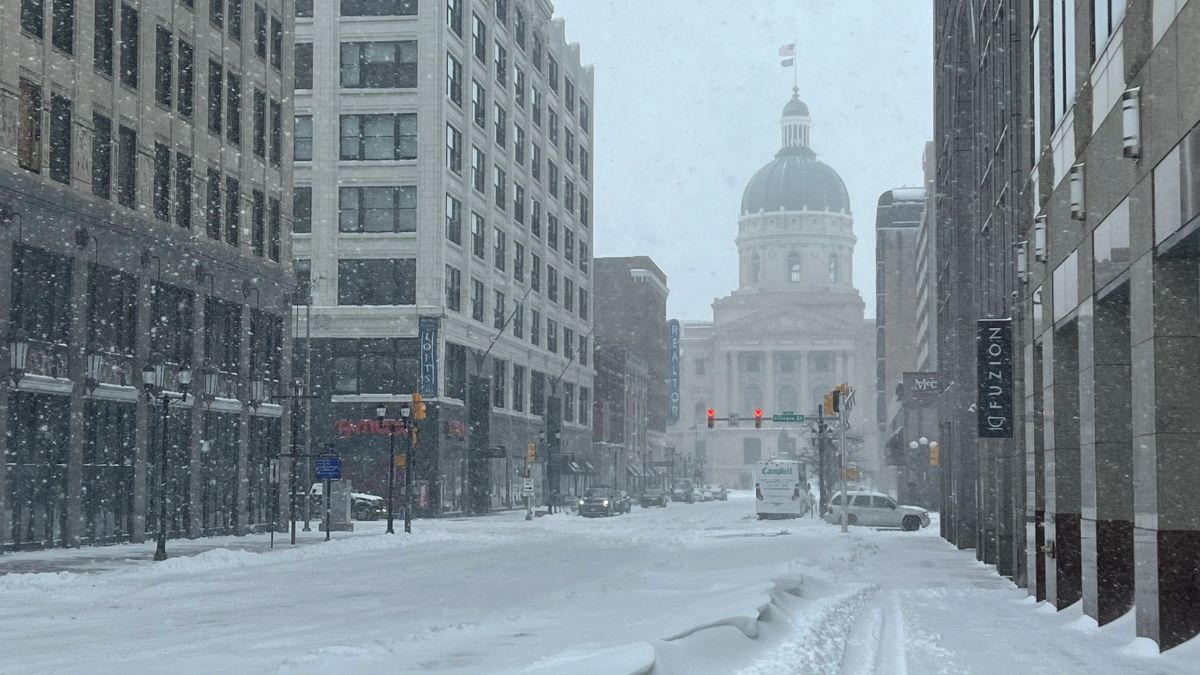Yes, it does snow in Indiana. However, the amount of snowfall varies across different regions of the state. The northern part of Indiana, closer to the Great Lakes, generally receives more snowfall compared to the southern regions. Average annual snowfall ranges from 10 to 40 inches, with the northwest region experiencing the highest snowfall.
Indiana is known for its sprawling farmlands, charming towns, and the iconic Indianapolis Motor Speedway. The state experiences diverse weather patterns throughout the year.

If you are moving to Indiana or are planning to make a trip to the state in the winter season, you may wonder, “Does it snow in Indiana?” Let’s find the answer to this query and explore about the climatic conditions of Indiana.
Location Overview
Indiana is a state located in the Midwest region of the United States. It is bordered by Lake Michigan and the state of Michigan to the north, Ohio to the east, Kentucky to the south, and Illinois to the west. The state’s capital and largest city is Indianapolis.
Geographically, Indiana is characterized by rolling hills, fertile plains, and numerous rivers. The northern part of the state is influenced by the presence of the Great Lakes, particularly Lake Michigan, which affects its climate and precipitation patterns.
Indiana is known for its diverse landscapes, including expansive farmlands, forests, and picturesque small towns. The state has a rich agricultural heritage and is often referred to as the “Crossroads of America” due to its extensive network of highways and transportation infrastructure.
In addition to Indianapolis, other notable cities in Indiana include Fort Wayne, Evansville, South Bend, and Bloomington. These cities offer a mix of urban amenities, cultural attractions, and recreational opportunities.
Geography and Climate of Indiana
Indiana has a humid continental climate. This means that the state experiences distinct seasons with hot summers and cold winters. However, the extent and frequency of snowfall can vary across different parts of Indiana.
Indiana’s geography plays a crucial role in determining its snowfall patterns. The northern part of the state, which is closer to the Great Lakes, tends to receive more snowfall compared to the southern regions.
The proximity to these large bodies of water influences the amount of moisture available for precipitation, leading to increased chances of snowfall.
Historical Snowfall Record
The historical snowfall records for Indiana vary depending on the specific location and time period. The following are examples of notable snowfall events and records in Indiana’s history:
- Blizzard of 1978
The Blizzard of 1978 is one of the most significant snowstorms in Indiana’s history. It occurred from January 25 to January 27, 1978, and affected a large portion of the Midwest, including Indiana.
This historic storm brought heavy snowfall, strong winds, and blizzard conditions, resulting in widespread disruptions and significant snow accumulations across the state.
- Snowiest Winter
The winter of 2013-2014 holds the record for being one of the snowiest winters in Indiana. Many areas of the state experienced above-average snowfall during that season, with some locations recording more than 50 inches of snow.
- Individual Snowfall Events
Indiana has seen several individual snowstorms that have left a significant impact. For example, in January 2005, a winter storm dumped heavy snow across the state, resulting in widespread travel disruptions and school closures.
Similarly, the winter storm in December 2004 brought substantial snowfall to parts of Indiana, causing transportation problems and power outages.
It is important to note that snowfall records can vary from one location to another within the state. The northern regions tend to receive higher average snowfall due to lake-effect snow, while the southern regions generally experience less snowfall.
Winter Season & Snowfall Pattern
Indiana is often affected by weather systems that bring cold air from the north and moisture from the Gulf of Mexico. These systems can result in snowfall across various parts of the state. Additionally, the passage of low-pressure systems and frontal boundaries can enhance the likelihood of snowfall events.
Snowfall distribution can be quite variable across Indiana. The northwest region, including cities like South Bend and Gary, generally receives the highest snowfall. Areas further south, such as Indianapolis and Evansville, tend to experience lower snowfall totals.
Lake-effect snow, a weather phenomenon commonly observed near the Great Lakes, can heavily impact the northernmost regions. These areas may experience more frequent and intense snowfall due to the interaction of cold air passing over the warmer lake waters.
However, other parts of the state rely more on synoptic-scale systems, which affect broader regions and can lead to significant snowfall events.
Locations to Enjoy Snow
Indiana offers various locations where you can enjoy the snow and partake in winter activities. Here are a few places to consider:
- Pokagon State Park
Located in Angola, Pokagon State Park is known for its beautiful scenery and recreational opportunities during the winter season. The park features a refrigerated toboggan run, which is one of the longest in the United States.
Visitors can experience the thrill of speeding down the toboggan run and enjoy other activities, such as cross-country skiing, snowshoeing, and ice fishing.
- Paoli Peaks
Paoli Peaks, situated in Paoli, is a popular winter destination for skiing and snowboarding enthusiasts. It offers a range of slopes suitable for all skill levels, as well as a terrain park for those looking for additional challenges.
- Brown County State Park
Brown County State Park, located near Nashville, Indiana, transforms into a winter wonderland during snowy months. The park offers opportunities for cross-country skiing, sledding, and hiking along its picturesque trails.
The scenic beauty of the park, with snow-covered trees and rolling hills, creates a serene and peaceful atmosphere.
- Indiana Dunes State Park
Indiana Dunes State Park, situated along the southern shore of Lake Michigan, provides a unique winter experience. The snow-covered sand dunes offer a stunning backdrop for winter walks and hikes.
- Indianapolis
White River State Park offers ice skating at its outdoor rink during winter, allowing visitors to glide across the ice surrounded by beautiful city views. Additionally, some city parks in Indianapolis have designated areas for sledding, such as Ellenberger Park and Sahm Park.
These are just a few examples of locations in Indiana where you can embrace the snowy season and engage in various winter activities. Before planning your visit, checking the specific park or venue websites for operating hours, conditions, and any additional guidelines is always a good idea.
Factors Influencing Snowfall
Factors influencing snowfall include latitude and elevation, proximity to water bodies, atmospheric moisture, air masses and frontal systems, topography and orographic lifting, and climate patterns.
These factors determine the availability of cold temperatures, moisture, and atmospheric dynamics necessary for snowfall formation in a given region.
Conclusion
Indiana does receive snowfall during the winter months, with the amount and frequency varying across different regions. While the northern part of the state is more prone to heavy snowfall due to its proximity to the Great Lakes, other areas also experience significant snow events throughout the winter.
Whether you are a resident or planning a visit to Indiana, be prepared for snowy winters and take advantage of the many enjoyable activities that the season brings.
